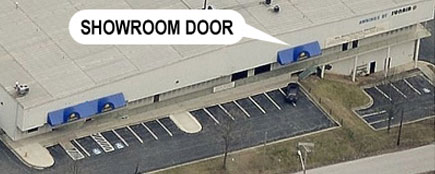Sometimes it can be a difficult decision to choose which pergola shade system is best for your situation and needs. Regardless of which you choose, both the adjustable Louvered pergolas and retractable fabric pergolas are a fantastic addition to your outdoor space. You will have many years of enjoyment and use of either system.
Sunair Awnings & Solar Screens manufactures and distributes many different models, and you will not have a problem finding a system that best fits your needs.
A Louvered pergola system has had a bit more exposure over the last few years as there are more companies making and promoting them. There is also a perception that the metal louvers is made of aluminum and not fabric, so they last longer. The fact is that the performance fabrics used in fabric pergolas today, are the same as the ones used with the high-end tent structures, and they last a long time. Sunair Awnings and Architectural structures, uses only Serge Fabrics vinyl fabric made by Ferrari in France. Ferrari Soltis Proof 502 and 602 are highly durable, dimensionally stable materials. This waterproof material protects against bad weather and UV and offers exceptional dirt and mold resistance due to its PVDF surface treatment. So, a fabric pergola really should not be discounted for that reason. However, metal louvered top still has some advantages there.
Both a louvered and fabric pergola protects you from the sun and rain. The louvers must be adjusted correctly and the retractable fabric top on a fabric pergola has to be extended to protect you from the sun. The difference is that on a standard louvered system you can still have some light and openness throughout the Pergola while the lovers are partially open, while on a fabric pergola only the section that is closed or extended protects you from the sun. However, with a fabric pergola, you can open the pergola completely for the alfresco dining experience on nice evenings, or cloudy days.
Sunair offers the Brera fully retractable louvred system for this reason. However, once you retract the louvers even partially, they don’t protect you from the rain, while on a fabric pergola you still have some protection. On a fabric pergola the retractable fabric has to be fully extended and taut in order to protect you from the rain so that water flows into the gutter system and down through the posts or downspouts.
Sunair offers the Opera adjustable louvered Pergola, and the NOMO fabric Pergola. Both these systems are what is called ‘Bioclimatic” or flat pergolas with integrated gutters and optional roll down screens and LED. Multiple modules can be added together to create a larger system covering large areas. Multiple modules to cover a larger area can get rather expensive, therefore other options are available that lower the cost. The Mito Pergola by Sunair can go as large as 42 ft wide x 29 ft projection, with one fabric and one motor. The advantage with this module is that it can cover larger areas at a lower cost per sq/ft. However, if you want to enclose the pergola with side roll down screens, this is typically better accomplished with an Opera or Nomo Pergola instead.
Any Pergola type system can sometimes be added to existing wood structures depending on the integrity of the system. The Opera louvered, or Nomo fabric pergola are very heavy because they come with their own structure and gutter system. They are more meant to be used as free-standing systems and not necessarily conducive to adding on top of an existing wood or metal structure. Sunair manufactures and distributes the Tecnic and Tecnic One pergola system for this reason. Both systems have a retractable fabric roof that folds like an accordion under your structure. Even if the systems are installed completely flat, you can add side water drainage so water flows off the system properly during normal rain events.
One advantage with adjustable louvered systems like the OPERA is that it can take some load. The allowable “Live load” is not specified in terms of how much snow, but rather total weight allowed to accumulate on top of the system. The allowable live load depends on the size of each module and an engineer has to calculate maximum live load for each system. The fact is that rain on top of snow freezes and adds to the weight and changes the calculations. There is a false perception that Louvered systems can be out in all kinds of snow, and that is not true. It is not advisable to use any type of Pergola system in the snow. A fabric pergola also on the other hand cannot take any live load and can only be used in rain events. However, most homeowners and restaurants are not using Pergolas in the dead of winter and will have the pergolas retracted. To keep these systems safe in the winter when not in use is simple. On a fabric pergola, that means retracting the fabric to its full retracted position. For Louvered systems, that means setting the louvers in vertical position so snow will not accumulate. These positions to keep the systems safe are also the same position they should be during heavy wind events. It is important to note that if these systems are used in areas exposed to tropical storms or hurricanes, an engineer must do calculations and sign off before the pergola can receive a permit and installed.
Another thing to keep in mind is that rain falling on the metal louvers can also be noisy. Fabric Pergolas have an advantage as the fabric absorbs some of this noise. Louvers can also be foam filled, which is an advantage in colder climates and does dampen the noise also.
Sunair distributes the OPERA, VISION, and BRERA louvered pergola models.
Sunair distributes the following Fabric Models, NOMO, RIALTO, MITO, LEVEL, TECNIC, and TECNIC ONE










